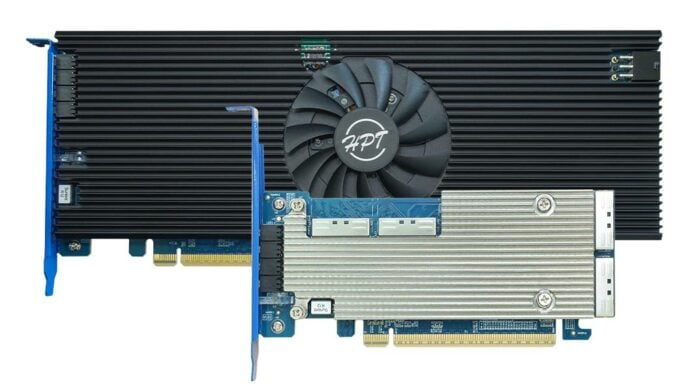HighPoint has debuted the world’s first 8-Channel PCIe Gen5 x16 NVMe Switch. The device lets you take advantage of up to 2PB for all the storage capabilities you could ever need. The catch is that it requires 32 NVMe SSDs to fill, making it an enterprise item. For reference, two petabytes is an eye-watering 2,000,000GB or 2,000TB. You could install the notoriously large Ark: Survival Evolved 5,000 times if it wasn’t strictly made for servers.
As reported by TechRadar Pro, HighPoint’s NVMe Switch and Raid products are fueled by Broadcom’s PEX89048 IC, utilising x16 lanes and the latest PCIe 5.0 technology to take on data-intensive tasks. This tech works by communicating directly with server CPUs made by AMD and Intel to integrate with the wealth of bandwidth available.
HighPoint bills its products as “accommodating today’s most demanding, data-intensive applications” through a single PCIe x16 port. Yes, this is the same slot that many of the best graphics cards use. Using it, RocketRAID 7600 and Rocket 1600 can produce up to 64GB/s, which is a whole lot of bandwidth. The brand designed the link system to actively chain and switch between different NVMe drives systematically to ensure stable and consistent file transfer speeds.
Dubbed a “Synthetic Hierarchy,” the brand isolates individual NVMe SSDs from the operating system, allowing the switch to change between models dynamically. Achieving this system requires a strong thermal solution in a form factor similar to what we see from dedicated video cards to slot into server machines. The usage of a single PCIe x16 port means there’s no need for the likes of an expansion card or any other type of proprietary tech outside of having enough power under the hood.
HighPoint plans to release the new generation of enterprising products in May launch, but we don’t yet know the direct pricing. Needless to say, you’ll have to pay for the NVMe drives to power the switch and the raid products, and that’s going to be where the biggest expense comes in. That’s because some of the best SSDs can get incredibly expensive, especially if you’re considering Gen 5.0 models in high capacity, let alone buying as many as 32 of them.

